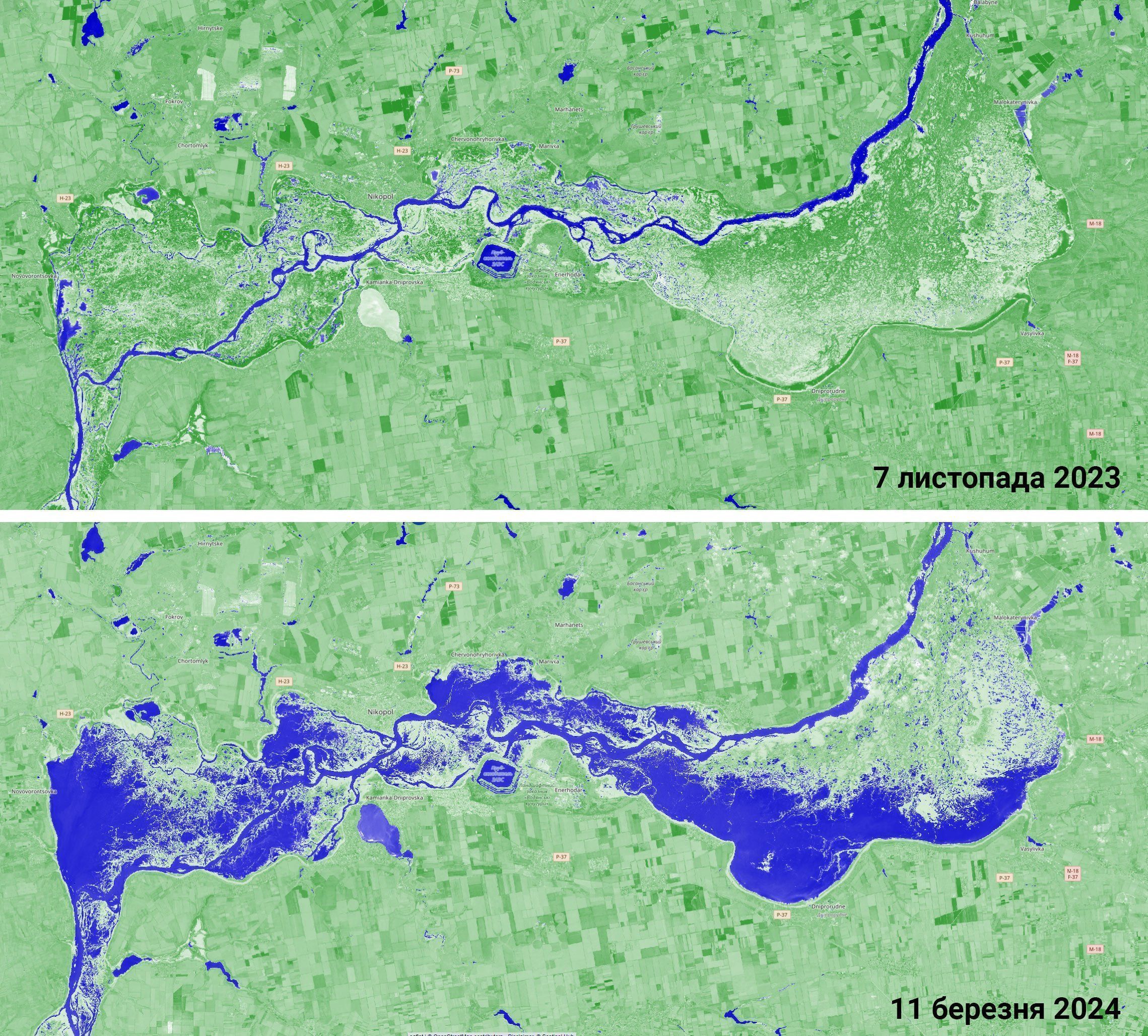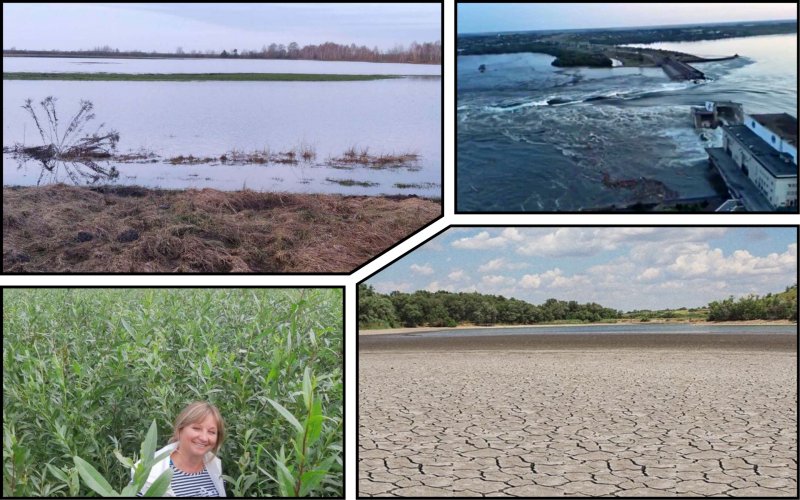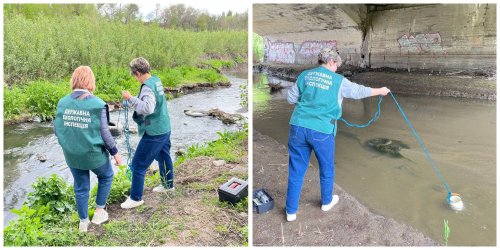The return of water to the shallow Kakhovka Reservoir has been recorded, which may be a manifestation of flooding in the lower reaches of the Dnipro River.
This is evidenced by satellite images of the area, Texty.org.ua reports.
As you know, the reservoir became shallow after the Russians blew up the Kakhovka hydroelectric dam on June 6, 2023. It was located on the site of Velykyi Luh, which was covered with a young willow forest in the first six months after the disaster.

The article explains that the water returned as a result of snowmelt, i.e. spring flooding.
"Here we clearly observe a rise in water level, which corresponds to the situation of spring floods on the river floodplain," said Hryhoriy Kolomytsev, an expert of the Ukrainian Nature Protection Group, junior researcher at the Schmalhausen Institute of Zoology of the National Academy of Sciences of Ukraine.
He emphasized that without artificial regulation of the water level on the territory of the former Kakhovka Reservoir, the same processes are observed as in natural, unregulated river floodplains.
Kolomytsev added that such flooding had been occurring in the lower reaches of the Dnipro for thousands of years before the construction of the hydroelectric power plant.
It is worth noting that flooding in the lower reaches of the Dnipro has not occurred for about 70 years.
"Nature is helping Ukraine recover," Iryna Kotsiuba-Patseva, a volunteer from Zhytomyr, wrote on Facebook.
In the discussion of the post, user Artem Lagutenko emphasized that the environmental disaster at the Kakhovka Reservoir was caused by its very appearance.
"What was done in the Soviet era, both in the Kakhovka Reservoir and in Bakota, is a relic of the past," Kotsiuba-Patseva added.

Earlier, EcoPolitic analyzed what is currently happening at the shallow Kakhovka Reservoir and what its future might look like.





